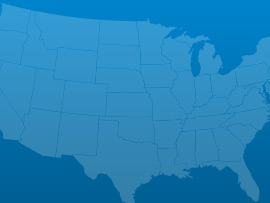Pennsylvania benefits from having diverse, reliable and affordable energy resources, and utilizes those resources to rank second in the country in terms of electrical generation. Pennsylvania is the number one exporter of electricity in the United States. The policy focus of increasing energy efficiency, reliability, and development of renewable energy resources, coupled with the recent expansion of natural gas resources from the Marcellus Shale regions, have had significant impact on the energy infrastructure of the Commonwealth. The infrastructure appears to be reasonably well positioned to meet the state’s current and 20-year planning horizon needs, although it is clear that energy and environmental policy will likely have a significant impact. In addition, given the power outages resulting from harsh winter of 2013-2014, the system’s resilience needs to be addressed.
 Bridges
Bridges Dams
Dams Drinking Water
Drinking Water Energy
Energy Hazardous Waste
Hazardous Waste Inland Waterways
Inland Waterways Levees
Levees Rail
Rail Roads
Roads Solid Waste
Solid Waste Transit
Transit Wastewater
WastewaterA: Exceptional, B: Good, C: Mediocre, D: Poor, F: Failing, ?: Incomplete
Each category was evaluated on the basis of capacity, condition, funding, future need, operation and maintenance, public safety, resilience, and innovation
Aviation
63 public-use airports
Bridges
5,218 of the 22,660 bridges are structurally deficient
Bridges
$429.30 million in bridge funds came from the Federal Highway Bridge Fund in 2011
Dams
96% of the state regulated dams have an Emergency Action Plan
Dams
767 high hazard dams
Drinking Water
$14.2 billion in drinking water infrastructure needs over the next 20 years
Energy
6.577 gigawatt-hours of renewable energy every year, ranking it 17th
Hazardous Waste
96 sites on the National Priorities List
Inland Waterways
260 miles of inland waterways, ranking it 28th nationally
Levees
199 miles of levees
Ports
70.4 million short tons of cargo in 2012, ranking it 11th nationally
Public Parks
$24.5 million of unmet needs for its parks system
Rail
55 freight railroads covering 5,071 miles across the state, ranking 5th nationally by mileage
Roads
15,615 of the state’s 119,846 public roads are major roads, and 15% are in poor condition
Roads
$3.7 billion a year in costs to motorists from driving on roads in need of repair, which is $424 /yr per motorist
Schools
$9.3 billion in estimated school infrastructure funding needs
Transit
450 million annual unlinked passenger trips via transit systems including bus, transit, and commuter trains
Wastewater
$17.9 billion in wastewater infrastructure needs over the next 20 years

March 03, 2017
As the President’s repeated in his address to Congress his pledge to dramatically increase infrastructure spending to the tune of $1 trillion, various Congressional Committees

March 01, 2017
On Tuesday night, President Trump addressed a joint-session of Congress for the first time in his presidency. Infrastructure was among the many issues he discussed.

February 28, 2017
U.S. motorists set a new record for vehicle miles travelled (VMT) in 2016, driving over 3.2 trillion miles, an increase of 70 billion miles from

February 17, 2017
Romantic dates, the Grammy awards and celebrating black history are not the only milestones of this week; the Oroville dam crisis in California and the